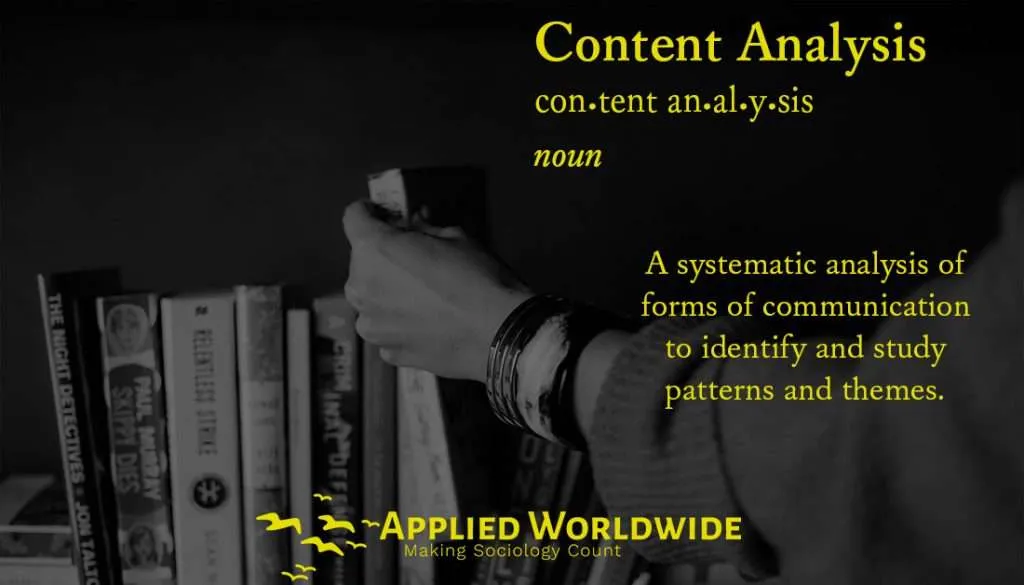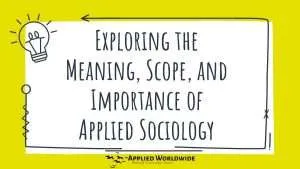When sociologists talk about content analysis, it often comes across as a term that is both buried in generalities and holds a depth of potential. As someone who has done book and podcast reviews in the past, the practice had a natural appeal, in that it felt the closest to literary criticism or social critique. It also deals with something that most of us engage with daily; content.
What is Content Analysis?
Content analysis is understood by academics to be a “systematic analysis of forms of communication to identify and study patterns and themes.” That means that content analysis can be a study of themes in film, television, music, or written material. Perhaps it’s a more in-depth look at how masculinity or gender is framed in Marvel movies.
Or maybe it is a more detailed look at how happiness is displayed in commercial ads for dog food. Many people may have their own understanding of the meaning in these forms of communication, but what content analysis does so well is take commonsense notions in society and express them in a data-driven format.

Or, at least, this is the goal when it is done correctly. One of the greatest struggles with content analysis is minimizing the potential skewing of the data through selection processes. In many cases, it is super easy to select subjects and topics that may reinforce the assumptions of the author.
For example, let’s say someone wanted to do a study of American rap music to prove certain racial stereotypes about the black community. There are a plethora of songs and albums to draw upon that support such a notion. But doing so might ignore the evolution of the format, or the black community’s relationship with rap music, or any number of social elements.
Forms of Content Analysis
Content analysis can take three particular forms depending on the researcher’s goals. There is a conventional approach; where someone does a direct search within a text for a repetition of specific words and phrasing such as the number of times race is referred to in a book about the inner city.
There is the directed approach, where a predetermined theory or understanding will help determine which categories are coded for such as taking Marx’s notions of bourgeois vs. Proletariat and applying it to all of Charles Dickens. Finally, there’s a summarized approach, which counts the specific phrasing and terms, then notes the context while interpreting, for instance counting the number of times President Trump speaks about himself.
All of these methods are valid and useful but require different skill sets. One may need more understanding and context in knowledge, while others may just require straight-up math. But all of the methodology, when done correctly, offers the aspiring sociologist a tool for analysis.
Analyzing Dan Crenshaw: An Example
So how would someone do this correctly? A recent example of this would be a piece from the right-leaning Never-Trump website, the Bulwark. In an article titled “The Stories Dan Crenshaw Tells Himself,” Tim Miller explores the practices of congressional representative Dan Crenshaw (TX-R).
Crenshaw recently published a book titled Fortitude: American Resilience in the Era of Outrage. Crenshaw has defined his career by reportedly being a protector of Republican moral values while also taking Democrats and the press to task. However, he has not spent any time critiquing Trump, especially when Trump’s actions seem contrary to a traditional understanding of conservative values. But how do you prove it? What about looking at the book?
While Trump’s most essential character traits are savaged throughout Crenshaw’s 250 pages, his name is mentioned but 9 times. In comparison, the “media” is mentioned 9 times in the first 8 pages alone. Seven of the mentions of Trump are critiques of the media for being unfair to him. One is about an encounter Crenshaw had with anti-Trump activists. The final one is pushing back on right-wing conspiracies about the Deep State going after Trump.
Final Thoughts
While studying the phrasing of a single book is hardly enough to justify an academic study, it offers a simplistic illustration of how this all works. The repetition of phrases and themes can often reflect the truths of an author or their culture’s intent. In Crenshaw’s case, he sees value in attacking the media due to other political and cultural variables. But saying anything about Trump? That could be harmful to Crenshaw’s political career and reflects underlying currents in the Republican Party.
This is just one simple example. The point is that by looking at the content we read or consume on a daily basis through a lens of repetition and theme, we can get a strong grasp on what permeable messages underlie our everyday lives.







